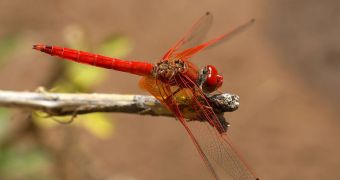A group of biologists has recently demonstrated in real-life that the first dragonflies to roam the Earth some 300 million years ago were a lot larger than their counterparts are today.
In a new series of experiments, the team emulated the environment on the planet, as it would have appeared all that time ago. They created special chambers, in which they reared dragonflies to see what happens.
The conclusion of the research is as much surprising as it is simple – expose dragonflies to high levels of atmospheric oxygen, and you get insects that are at least 15 percent larger than their “peers” living in the wild.
In other words, the scientists observed a direct correlation between the size of the creatures and the amount of oxygen there was in the chamber. The Earth's atmosphere was very rich in oxygen 300 million years ago, experts say.
In addition to providing an interesting insight into how dragonflies develop, this study also lends additional credence to the idea that a direct connection must have existed between elevated levels of oxygen in the ancient air and the enormous size of the earliest animals on Earth.
This has been proposed in studies for quite some time now, but concrete evidence to back up the claims could not be found in nature. This investigation does just that, in a scientific, repeatable manner.
“No one has been successful growing dragonflies under controlled laboratory conditions before, at least to my knowledge,” says Arizona State University paleobiologist John VandenBrooks, who was the leader of the research effort.
“This has allowed us to ask the question, ‘how have oxygen levels through time influenced the evolution of insects'?” he adds further. The expert presented the findings on November 1 at the annual meeting of the Geophysical Society of America, in Denver.
According to data derived from core samples and other sources, the Earth had about 50 percent more atmospheric oxygen during the Paleozoic era, Wired reports.
This led to the development of large insects, such as for example dragonflies that had a wing span of no less than 2.5 feet. Modern descendants cannot even grow close to that size.

 14 DAY TRIAL //
14 DAY TRIAL //